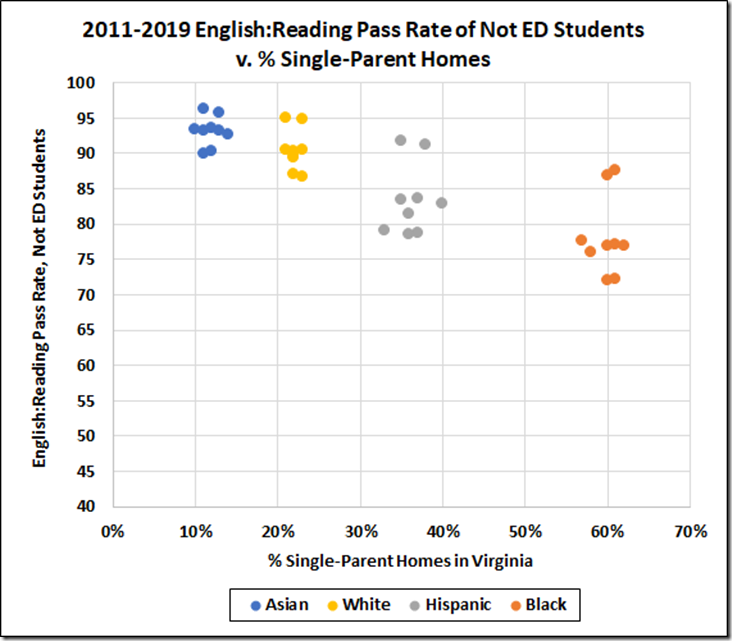 In this post John Butcher, author of CrankysBlog, explores the relationship between K-12 academic outcomes, as measured by Standards of Learning (SOL) test scores and single-parent households. His conclusion: the data imply “a strong relationship” between the two. — JABby John Butcher
In this post John Butcher, author of CrankysBlog, explores the relationship between K-12 academic outcomes, as measured by Standards of Learning (SOL) test scores and single-parent households. His conclusion: the data imply “a strong relationship” between the two. — JABby John Butcher
The Annie E. Casey Foundation’s Kids Count Web site includes Virginia household single-parent percentages by race and by Hispanic culture or origin. Juxtaposing those data for calendar 2010 to 2018 with the SOL pass rates for 2010-2011 through 2018-2019 produces some interesting graphs.
Note: The VDOE database offers data for students who are, or are not, “economically disadvantaged” (here abbreviated ED and Not ED). The criteria are largely driven by eligibility for free or reduced price lunches. The ED/Not ED distinction is interesting in the SOL context because ED students generally underperform their more affluent peers by some fifteen to twenty points, depending on the subject. So, let’s look at the data for both ED and Not ED students. The ideal dataset would provide single-parent counts for both economic groups. The Kids Count data are totals for each race or culture so we’ll make do with that limitation.
To start, the graph atop this post shows the reading pass rates over the nine-year period for Not ED Asian, Black, Hispanic, and White students v. % single-parent homes for ED + Not ED members of each group.
Of course, correlation does not tell us about causation unless we can control for all the other possible variables. Here, whatever the underlying cause(s) may be, the performance differences of the four groups are clearly related to the percentages of single-parent households.
For all four groups, the outlying pair of higher pass rates are for AY 2011 and 2012, the two years in these data prior to new, tougher reading tests.
The data for the ED students show a similar pattern but with lower pass rates and larger decreases after the deployment of the newer tests.
The math data paint similar pictures, albeit the new math tests came a year earlier so there is, at most, only a single high outlier in each group.
We can get another view of the relationship between pass rates and single-parent homes by looking at the averages over the 9-year span.
Again, these data cannot tell whether the lack of a second parent causes these effects on performance. But they do imply a strong relationship between the number of parents in the home and SOL performance.
The ED/Not ED differences in these averages range from 9.2 to 18.1 points.
Per subject, the differences in the averages appear to increase slightly with increasing percentages of single-parent homes.

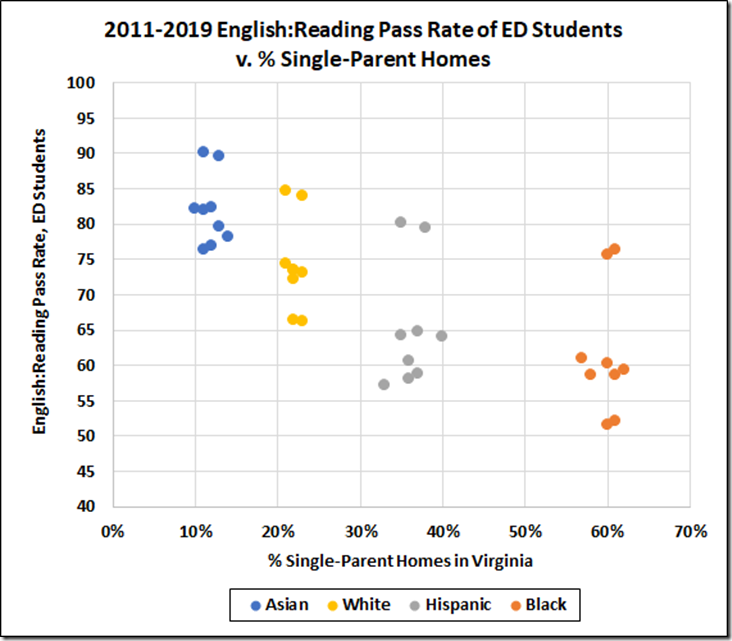
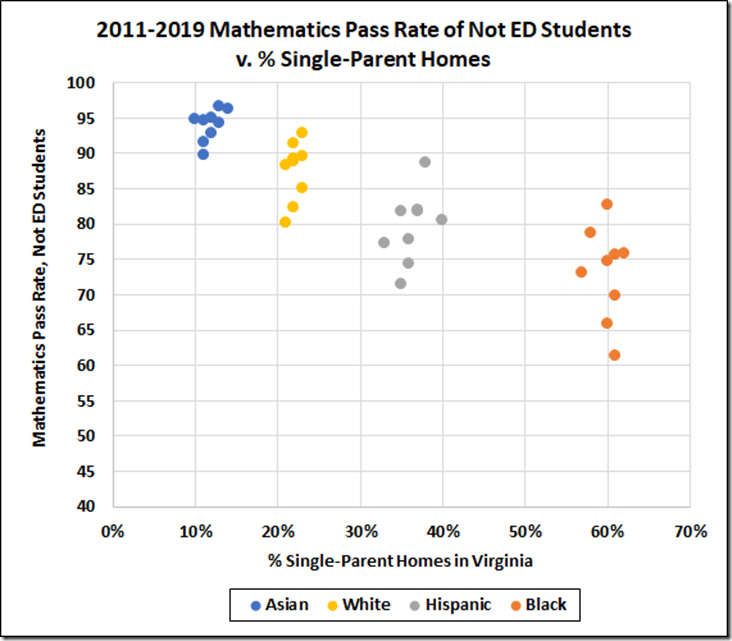
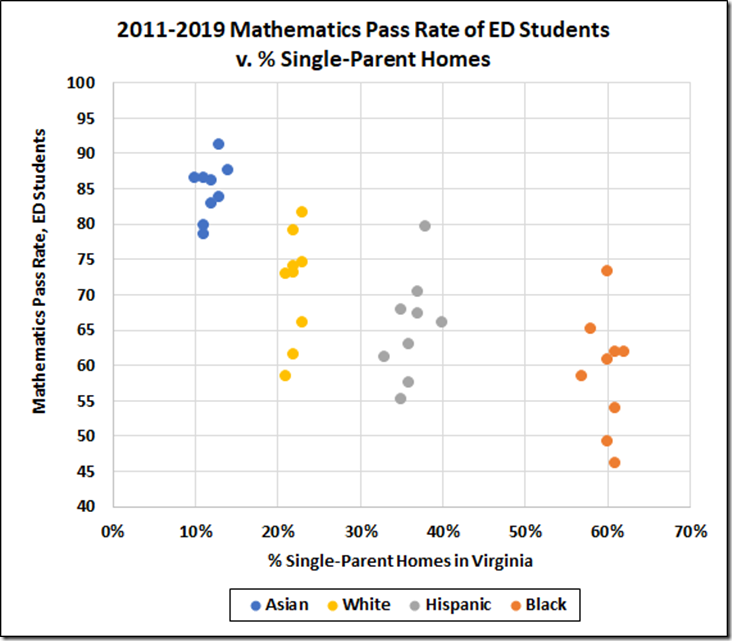
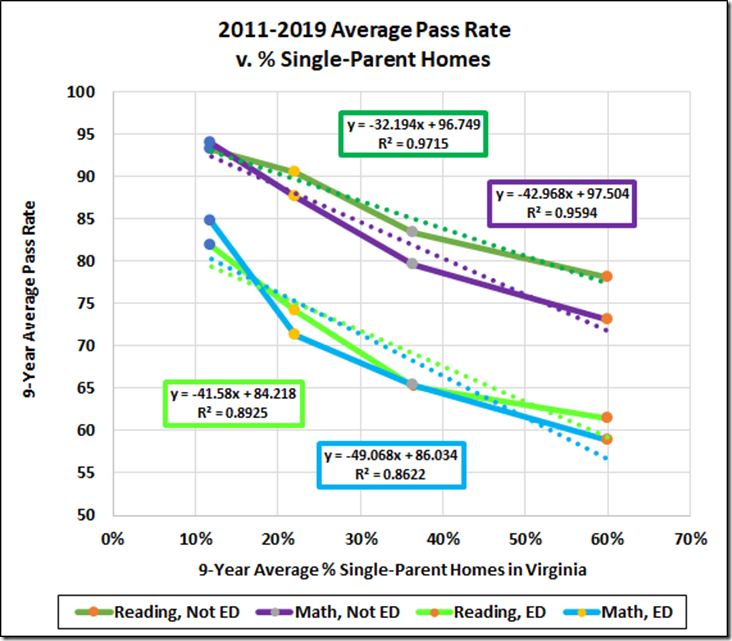
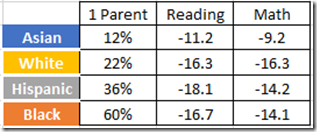
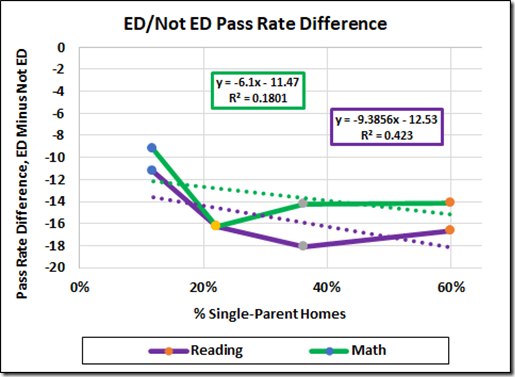
Leave a Reply
You must be logged in to post a comment.